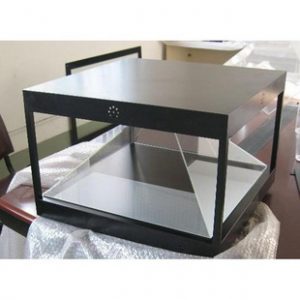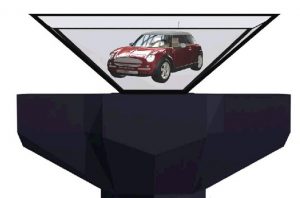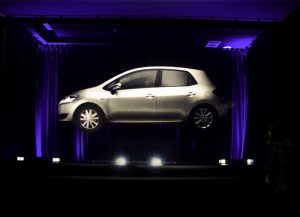3D Holographic display Glass
Holographic display glass,Holographic Display 3D Pyramid glass,holographic pilot project glass,high performance 3d holographic projection temperedglass,3d hologram display glass
Product description: It is a kind of optical spectroscope with coating, after the complex film system design and the selection of refractive material. The video information after the way of projection and diffraction, the image is recorded and reappeared with the real 3D image via glass functional film. It is widely used in commodity exhibitions, stage shows, audio and video interaction, instrumentation, etc.
Holographic Projection Glass is a transparent or semi-transparent display surface that allows high-definition holographic images or videos to appear as if floating in mid-air. It combines projection technology with specialized glass (or film) to create immersive, futuristic visual experiences.
How It Works
Projection Source – A projector (LED, laser, or DLP) beams content onto the glass.
Special Coating/Film – The glass has a holographic optical element (HOE) or nano-structured surface that diffuses light to create 3D-like visuals.
Viewing Angle – Designed for optimal visibility from multiple perspectives.
Applications of Holographic Projection Glass
| Industry | Use Cases |
|---|---|
| Retail | Interactive storefront displays, virtual try-ons |
| Museums | Holographic exhibits, historical recreations |
| Corporate | 3D presentations, product demos |
| Healthcare | Medical imaging, surgical training |
| Automotive | AR showroom displays, HUD (heads-up displays) |
| Entertainment | Concerts, theme parks, hologram stag |
Technical Data:
| Name | Holographic glass |
| Place of origin | CHINA |
| Thickness | 3mm~12mm |
| Size | 60*60mm,1830*2440mm,2140*3300mm, 2250*3300mm,3660*2440mm, etc. also can be customized
Max size:3660*2440mm Min size: 600*900mm |
| Technology: | Edge grinding, drilling, hot bending, tempering, laminated, insulated |
| Quality standard | CCC certificate |
| Logo | As per customers’ requirement |
| MOQ | 50 square meters |
Optical parameters
| Film surface | Y=61.02 | L=82.39 | a=-9.27 | b=-2.77 |
| Glass surface | Y=60.44 | L=82.08 | a=-9.69 | b=-3.22 |
| Transmission | Y=35.85 | L=68.40 | a=12.17 | b=5.41 |
Key Features of Holographic Projection Glass
1. Transparency & High Clarity
✅ Remains see-through when not in use (unlike traditional screens).
✅ Preserves natural light – Ideal for retail windows or museum exhibits.
2. 3D Holographic Effect
✅ Creates depth illusion (images appear to float in space).
✅ Works with 360° viewing angles (some advanced models).
3. Touch & Interactive Capabilities
✅ IR sensors or capacitive layers enable touch interaction.
✅ Used in kiosks, exhibitions, and AR applications.
4. High Brightness & Contrast
✅ Optimized for 4K/UHD projections even in well-lit environments.
✅ Anti-glare coatings reduce reflections.
5. Customizable & Flexible
✅ Can be curved, laminated, or applied as film on existing glass.
✅ Size-adjustable – From small tablets to large building facades.
6. Energy-Efficient
✅ Low-power LED projectors often paired with the glass.
✅ No backlight needed (unlike LCD screens).
7. Durability & Low Maintenance
✅ Scratch-resistant surfaces.
✅ Easy to clean (compared to fabric screens).
Hologlass Applications:



Comparison: Holographic Glass vs. Traditional Displays
| Feature | Holographic Projection Glass | LCD/LED Screen | Projection Screen |
|---|---|---|---|
| Transparency | Yes (see-through) | No | No |
| 3D Effect | Yes (floating image) | Limited (requires glasses) | No |
| Viewing Angle | Wide (up to 180°) | Narrow | Varies |
| Installation | Flexible (film or glass) | Fixed | Requires dark room |
| Interactivity | Touch-enabled possible | Touchscreen available | No |